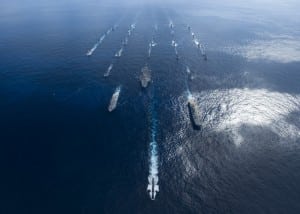
The U.S. Navy, which wants to expand its fleet to 355 ships, would have to spend an average of $26.6 billion a year over the next 30 years to reach its goal, a sharp increase from recent funding levels, the Congressional Budget Office (CBO) said April 24.The dollar amount is 40 percent more than what Congress appropriated for ship construction in fiscal year 2016 and 60 percent more than what the Navy has averaged over the past 30 years, the…

 By
By 











